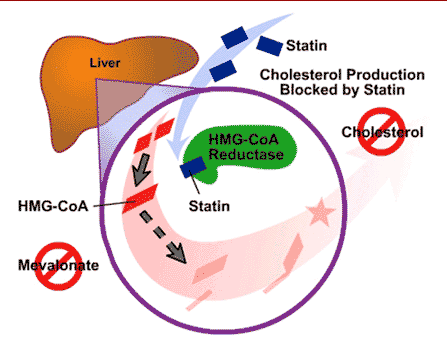Vytorin
Vytorin (ezetimibe & simvastatin)Vytorin is a brand name drug used to treat Dyslipidemia, an abnormal amount of cholesterol or other lipids in the blood. It is composed of two separate medications, Simvastatin (generic for Zocor) and Ezetimibe (generic for Zetia). Ezetimibe works by decreasing cholesterol absorption in the small intestine. The second component of Vytorin, Simvastatin, works by reducing the production of cholesterol. Pharmacodynamics EzetimibeEzetimibe works to selectively inhibit cholesterol and phytosterol absorption in the body’s intestines. This drug appears to work at the brush border of the small intestine inhibiting cholesterol absorption which then leads to a decrease in cholesterol delivery to the liver. This is different from other cholesterol-reducing compounds because it does not directly inhibit cholesterol synthesis in the liver.[1] By inhibiting the absorption of cholesterol, ezetimibe decreases the cholesterol levels in the blood. [2]. Ezetimibe specifically targets the sterol transporter, which controls cholesterol uptake at the jejunal enterocyte brush border. SimvastatinSimvastatin interferes in the production of cholesterol and is a member of the statin medication family. As a group statins are known to lower a patient's LDL-C levels within their blood. Both patients with and without congestive heart disease (CHD) have experienced a reduction in their cardiovascular morbidity and mortality rates when prescribed medications in this family. [3] Generally, simvastatin acts as a competitive inhibitor of HMG-CoA reductase which catalyzes the formation of mevalonate from HMG-CoA in the blood.[4] This is further explained under mechanism of action.
Mechanism of Action EzetimibeWhen administered, the drug is inactive until it is absorbed. Upon absorption, ezetimibe is conjugated to active phenolic glucuronide where it is metabolized within the small intestine and liver. [5] Ezetimibe limits the internalization of cholesterol by the small intestine. Cholesterol is absorbed into cells with NPC1L1 through clathrin/AP2-mediated endocytosis. AP2 is a multimeric protein that works on the cell membrane to facilitate endocytosis. Ezetimibe inhibits the absorption of cholesterol by blocking the internalization of NPC1L1. [6] SimvastatinWhen the drug is administered, it is initially inactive. It must be hydrolyzed in order to become active. Once hydrolyzed, simvastatin reduces the amount of mevalonic acid in the blood by competing for HMG-CoA reductase with HMG-CoA. To produce cholesterol, Acetyl CoA is converted into HMG-CoA, which is then converted into mevalonate. Mevalonate is then converted into isopentenyl pyrophosphate (IPP), IPP is converted into squalene, and then finally squalene is converted into cholesterol. Simvastatin reduces the conversion of HMG-CoA to mevalonate, therefore lowering cholesterol levels. Simvastatin targets which is the enzyme responsible for said conversion. With the synthesis of cholesterol being divided into five major steps, this inability to convert targets only the second step in cholesterol synthesis.[7] |
| ||||||||||
ReferencesReferences
- ↑ https://www.drugbank.ca/drugs/DB00973
- ↑ https://pubchem.ncbi.nlm.nih.gov/compound/Ezetimibe#section=Experimental-Properties
- ↑ http://e-lactancia.org/media/papers/StatinasFK-FundClinPhar2004.pdf
- ↑ https://www.rpi.edu/dept/bcbp/molbiochem/MBWeb/mb2/part1/cholesterol.htm==Mechanism of Action
- ↑ https://www.accessdata.fda.gov/drugsatfda_docs/label/2008/021445s019lbl.pdf
- ↑ https://www.ncbi.nlm.nih.gov/pubmed/18522832
- ↑ http://www.merck.com/product/usa/pi_circulars/v/vytorin/vytorin_pi.pdf